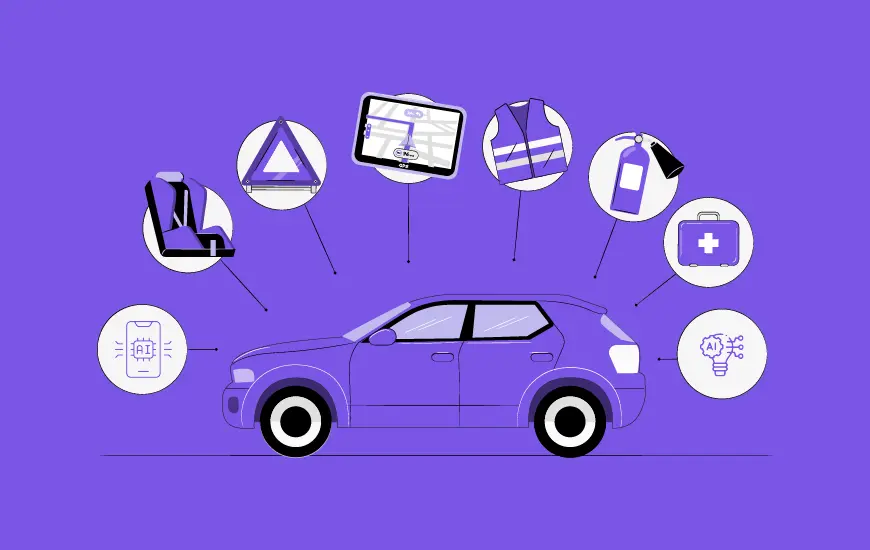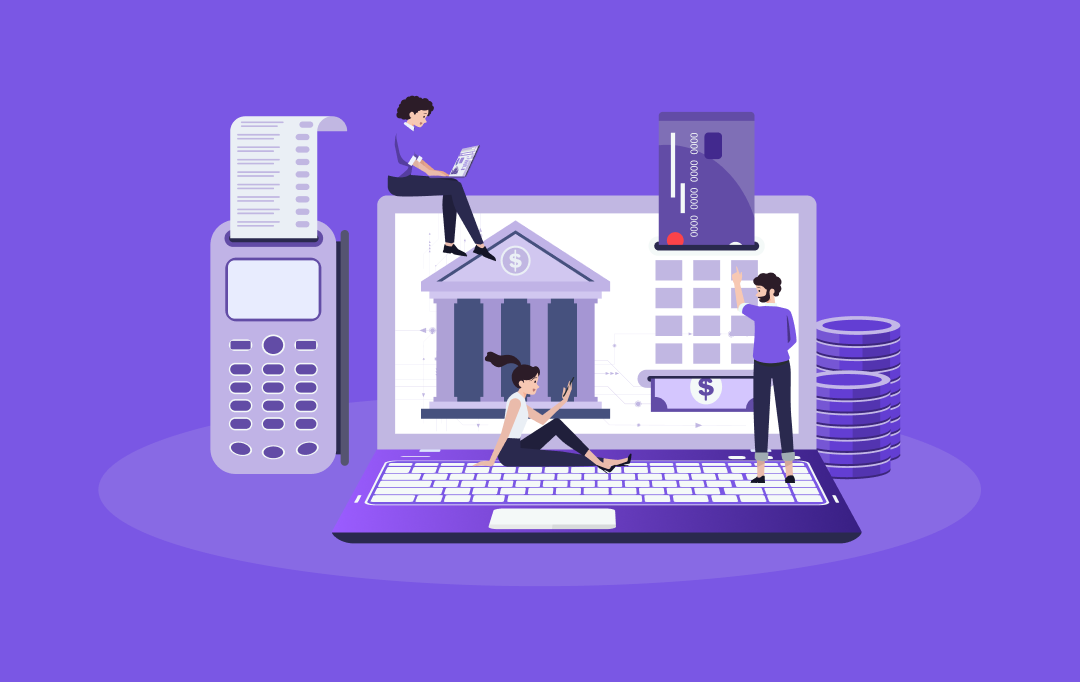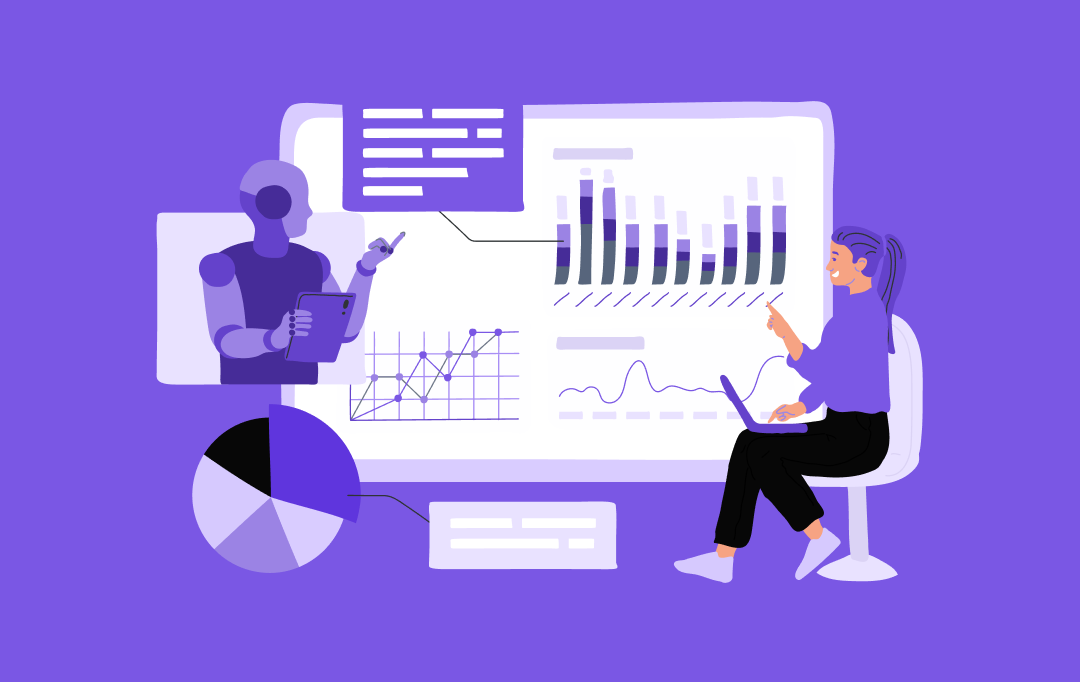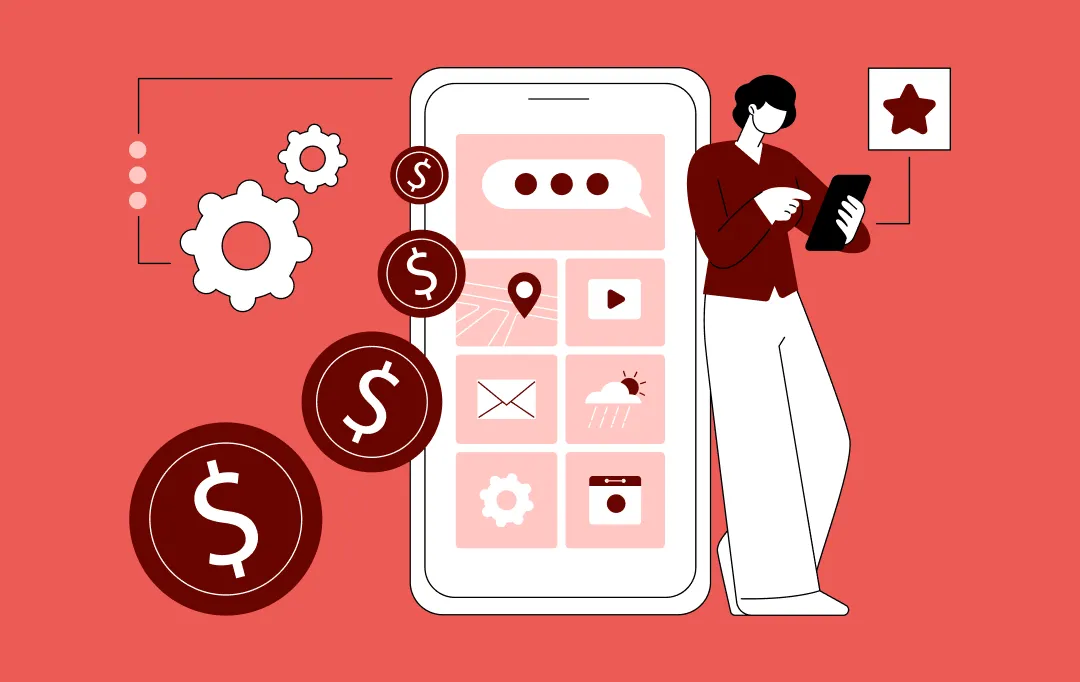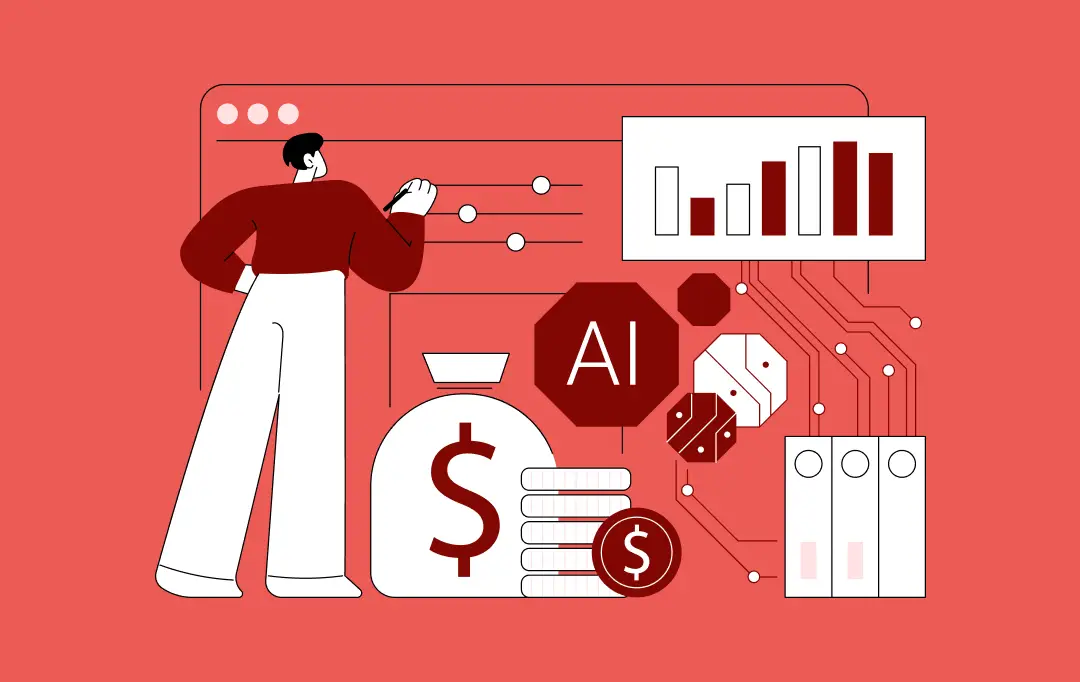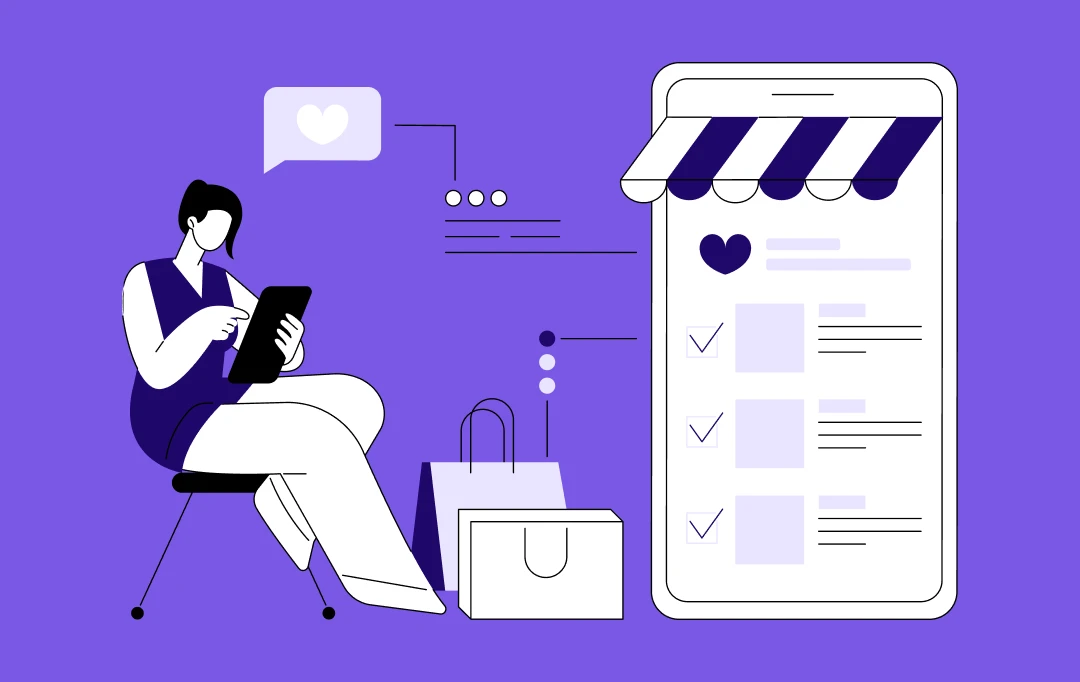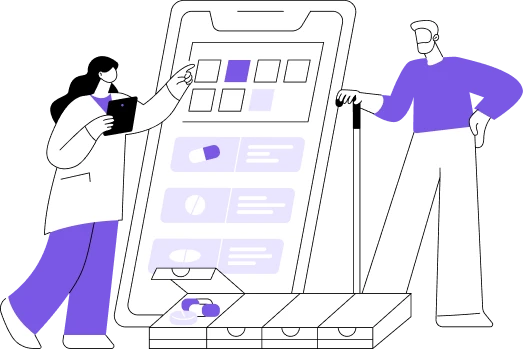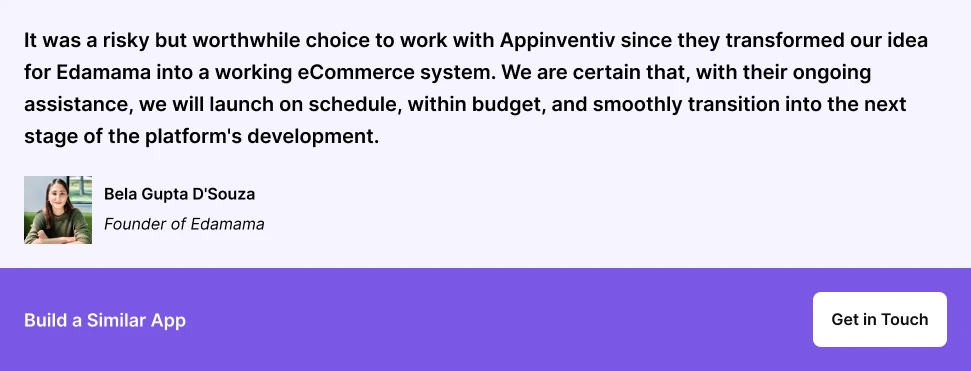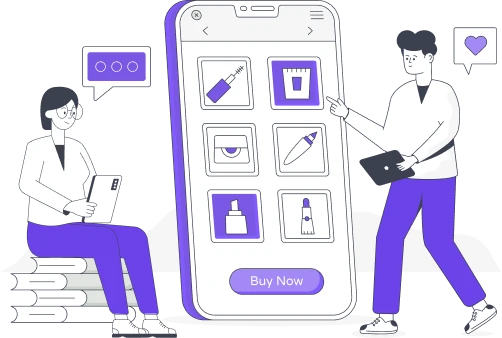- What Do Stats Say About mCommerce Market Growth?
- Why you Need to Secure your Mobile Commerce Business
- How to Develop Mobile Commerce Apps?
- Step 1: Define Your Business Goals and Target Audience
- Step 2: Choose the Right Platform for Developing Mobile Apps
- Step 3: Specify the Features and Capabilities
- Step 4: Create the Mobile Application
- Step 5: Third-Party Service Integration
- Step 6: Add Security Features
- Step 7: Quality Assurance and User Testing
- Step 8: Release the App and Start Advertising Campaigns
- Step 9: Maintain Post Launch
- Step 10: Gather User Input and Make Constant Improvements
- How to Secure Your mCommerce App?
- Review the Codes
- Frequent Verification
- Cryptography
- Protection by Binary
- Patch Regularly
- Avoid Injection Attacks
- Make Library Updates
- Utilize Multi-Factor Authentication (MFA)
- Secure Mobile Payments
- Management of User Sessions
- Implement Secure APIs
- Additional Security Features to Consider for your mCommerce App
- Transformative Features for a High-Performing mCommerce App
- Estimating the Mobile Commerce App Development Cost
- Top Mobile Commerce Trends Shaping the Future of Shopping
- Initiate Your Mobile Commerce App Development Journey with Appinventiv
- FAQs
- mCommerce app development is set to grow significantly, with eCommerce predicted to make up 41% of retail sales by 2027.
- A lack of security can lead to user abandonment and loss of trust, impacting app success.
- AI personalization, voice commerce, and mobile wallets are transforming mCommerce app development, improving user experience and security.
- Success depends on secure payments, real-time tracking, and cross-device compatibility.
- With mobile eCommerce expected to account for 63% of sales by 2028, adopting mCommerce app development is essential for staying competitive.
When it comes to mCommerce app development, securing an app is just as crucial as developing it. Although mCommerce has grown rapidly in recent years, not all apps are successful in the marketplace. Inadequate security is a major cause of failure. If their financial or personal information is in danger, users won’t think twice about leaving an app.
Our shopping habits have been transformed by mobile commerce, which provides convenience, a large selection of products, and the option to compare prices before making a purchase. However, these advantages also come with a responsibility to ensure that the users feel safe.
It’s critical to give security equal weight with user experience when creating your mCommerce app. A single hack could cost you and your users a lot of money in addition to harming the reputation of your app.
To illustrate why this is so crucial, let’s first look at some of the most recent data regarding the thriving mCommerce app development market before getting into the steps to secure your app.
With 63% of all eCommerce sales expected to come from mobile by 2028, there’s no better time to invest in mCommerce development.
What Do Stats Say About mCommerce Market Growth?
In the upcoming years, the mCommerce market is anticipated to grow significantly due to consumer preference for mobile shopping, technological advancements, and growing integration of mobile commerce solutions. The following are some of the most important figures regarding the growth of the mCommerce market:
- By 2027, eCommerce is expected to account for 41% of global retail sales, according to a Boston Consulting Group study. This illustrates the rapid growth of online shopping, with mobile commerce playing a significant role.
- Despite market challenges, eMarketer predicts that global eCommerce will reach a saturation of 23% by 2027, adding to a market value of over $8 trillion.
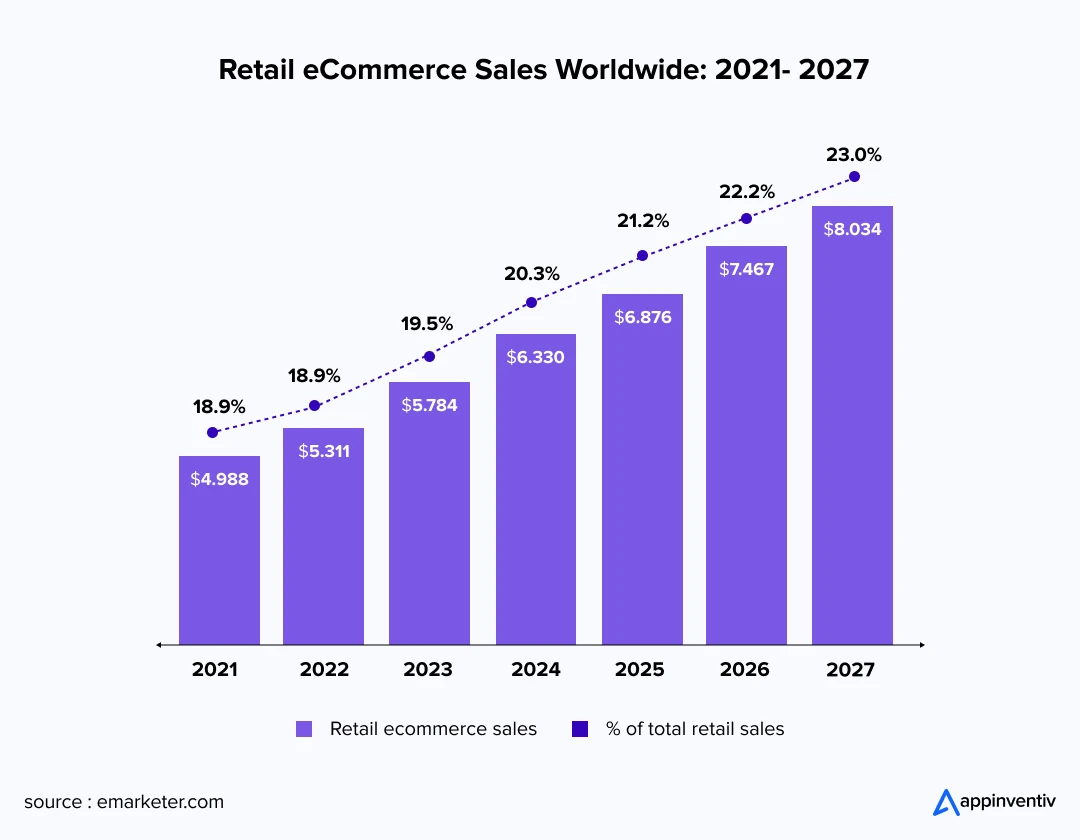
- Customers are spending more online, despite inflation and geopolitical concerns, proving that the shift to eCommerce is a long-term change in consumer purchasing habits.
- According to a Statista report, mobile eCommerce accounted for more than 56% of all retail e-commerce sales in 2023, generating $1.7 trillion. By 2028, its revenue is anticipated to reach $3.5 trillion, and its share is predicted to increase from 43% in 2018 to 63% in 2028.
According to these figures, mCommerce is clearly on the rise and should be a top priority for companies looking to maintain their competitiveness in the retail market.
Why you Need to Secure your Mobile Commerce Business
It is impossible to guarantee 100% security coverage. But it does not mean that your business data is exposed to cyber risk. The goal here is to ensure your security measures prevent attackers from targeting your app in the first place.
Here are a few possible reasons to secure your mCommerce app:
- All the mCommerce apps operate through a form of P2P sharing. And as a service provider of mobile transactions, you are partially responsible for securing yourself and your customers’ data.
- The second reason for securing your mCommerce business is that any kind of malware or security breach can lower the trust of your customers towards your brand.
- Security issues might force the users to uninstall and abandon your application, thus swiftly dropping your engagement rates and thereby completely stopping your revenue stream.
Beyond basic security measures, enterprises must implement comprehensive fraud management for eCommerce businesses to protect against sophisticated payment fraud, account takeovers, and transaction manipulation.
How to Develop Mobile Commerce Apps?
The process of developing a mobile commerce app is intricate and calls for thorough preparation, resources, and industry knowledge. From platform selection to post-launch marketing and upkeep, there are several steps involved. Let’s review the specific steps involved in mCommerce app development.
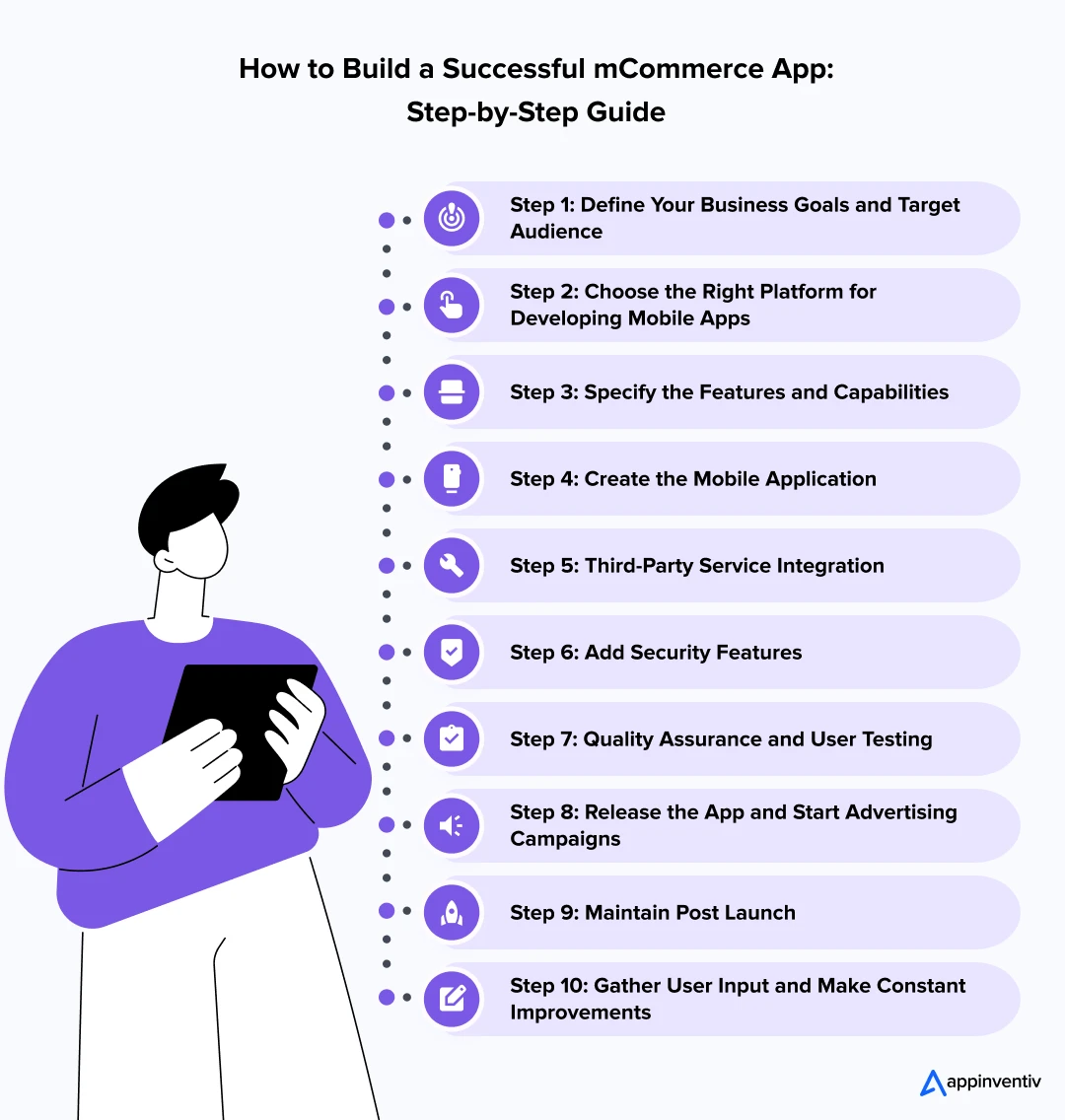
Step 1: Define Your Business Goals and Target Audience
Before you dive into designing or building your mCommerce app, take a step back and get crystal clear on why you’re creating it in the first place. What does success look like for you? Is it more sales, stronger brand loyalty, or tapping into a new market segment? Whatever your goals are, write them down.
Next, focus on who you’re building the app for. Are they budget shoppers, loyal repeat buyers, or people who value premium experiences? Understanding your audience, their habits, expectations, and pain points, will help you create an app that actually solves their problems and keeps them coming back.
Step 2: Choose the Right Platform for Developing Mobile Apps
Choosing the right platform is the first stage in developing an mCommerce app. The most popular options are hybrid solutions, iOS, and Android. Given its larger user base, Android might be the best option if you want to create a mCommerce app that appeals to a wide audience.
However, iOS’s user base tends to produce better conversion rates and higher revenue. Cross-platform mCommerce development is a great choice if you want to optimize your reach across both platforms. It allows you to develop a single application that works flawlessly on various operating systems.
Step 3: Specify the Features and Capabilities
Determining the mCommerce app features your app will have is the next step after selecting the platform. To ensure a seamless and user-friendly experience, implementing the most trending and useful features is essential. For instance, priority features like product browsing, simple checkout, and safe payment gateway integration can significantly enhance user engagement and boost conversion rates.
Features that improve the shopping experience, like order tracking, wish lists, and personalized recommendations, are crucial for a successful mobile commerce application development. Creating a mCommerce app that stands out in a crowded market requires ensuring users can navigate and interact with the app with ease.
Step 4: Create the Mobile Application
The success of your app is largely dependent on its design. Usability and aesthetics should be the main design priorities during the mobile commerce app development stage. The application should have a clear font, easy-to-use animations, and a seamless navigation experience. To avoid any confusion that might discourage users from making a purchase, the user interface (UI) should be clear and easy to use.
A complex design or an excessive number of features could overwhelm the user and detract from the overall experience. The likelihood of repeat business and user retention will both be greatly enhanced by a well-designed mobile commerce app.
Step 5: Third-Party Service Integration
A crucial step in making sure your app works as intended is integrating third-party services. Payment gateways like PayPal, Stripe, and Apple Pay must be integrated into mobile commerce application development in order to process payments securely and effectively.
Additionally, you should incorporate analytics tools to monitor user behavior and social media logins for a smooth signup process. By enhancing functionality and streamlining user interactions, these third-party services substantially enhance the value of your app, making it easier for your clients to complete transactions quickly and securely.
Step 6: Add Security Features
Now that the core features are being built and the backend is set up to handle big volumes of transactions, it’s time to focus on something you really can’t afford to overlook—security.
When it comes to mobile commerce app development, this part is non-negotiable. Make sure you’re using secure payment gateways, encrypting any sensitive user data, and putting strong protections in place to prevent fraud or data breaches. After all, if people don’t feel safe using your app, they’re not going to use it at all.
Also Read: Develop Mcommerce App with these Top Security Features
Step 7: Quality Assurance and User Testing
Thorough testing must be done before releasing your app. Functional, performance, and security testing are all part of this phase to make sure everything is operating as it should. Every component of the app should be tested, including user flows, payment processing, and app performance in different scenarios.
It’s crucial to confirm that security features are operating as intended during this phase of mCommerce app development to make sure users can safely interact with your app. A smooth launch is ensured by thorough testing, which also helps find and fix any bugs or glitches before the app goes live.
Step 8: Release the App and Start Advertising Campaigns
Once successfully tested and bug-free, it’s time to release the app on the app stores (App Store, Google Play Store). This phase involves submitting the app for evaluation, ensuring it complies with all app store regulations, and then making it available to the users. But let’s be clear—just launching the app isn’t the finish line. It’s actually the beginning of the real journey.
Mobile commerce development strategy entails creating a comprehensive marketing strategy to attract users and encourage initial downloads. Utilize email marketing, influencer campaigns, social media marketing, and search engine optimization (SEO) to build excitement and awareness for the release of your app. Your app will gain traction and attract your target audience with the help of effective promotion.
Step 9: Maintain Post Launch
The next step is to ensure your app continues to run smoothly after it goes live. To keep the app running smoothly, it needs to be updated frequently. After a mobile commerce app is released, it should be maintained by addressing bugs and security gaps, as well as adding new features based on user feedback.
Regular updates make sure that the app stays up to date, relevant, and in line with what people want. You can also add new features, deals, and seasonal content to your app to keep existing users engaged and attract new ones.
Step 10: Gather User Input and Make Constant Improvements
The success of your app is greatly influenced by user feedback. Following the launch, gather and examine user feedback to identify areas that require enhancements. User feedback will direct your app’s ongoing development, whether it involves fixing bugs, improving the user interface, or adding new features.
Your app will remain competitive in the constantly evolving mobile commerce market if you incorporate these recommendations into upcoming updates. You can ensure your app’s long-term success by concentrating on user satisfaction and making adjustments to meet their needs.
How to Secure Your mCommerce App?
What is mCommerce without its security? Your customers should have a reason to trust you, and that reason is strong mobile commerce security that can protect customer information. Mobile app security practices should be followed to build an app that is secure at all times. Here are a few key security features of mobile commerce platforms.
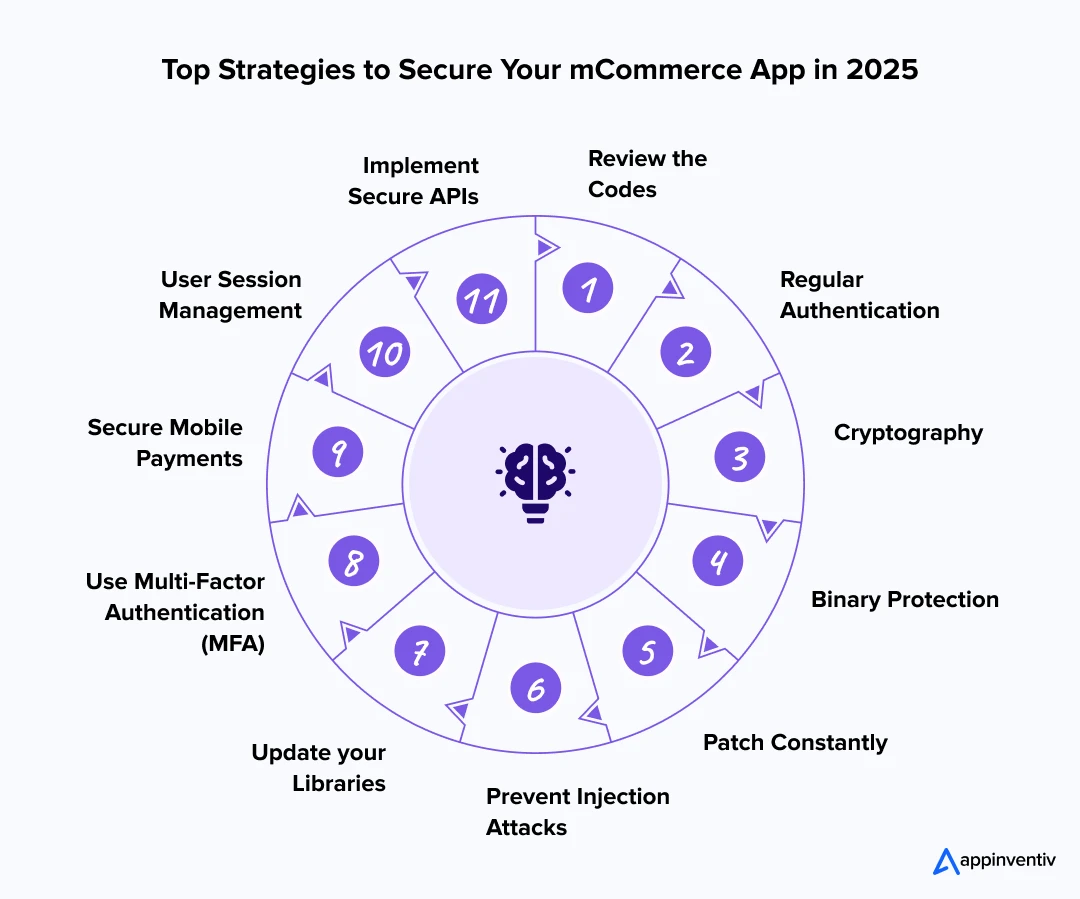
Review the Codes
Code review is a crucial procedure when creating a mobile commerce app in order to guarantee a safe base. It is essential to have skilled developers carefully review the code because flaws or vulnerabilities in it can open the door for cyberattacks.
Sensitive areas like database access, cryptography, authorization, and authentication should receive special attention during the review. You can considerably lower the possibility of errors in the mCommerce app development process and guarantee a safe app environment for your users by implementing frequent code reviews.
Frequent Verification
A key component of mobile commerce app security is authentication. Implementing multi-layered authentication procedures is crucial when creating a mCommerce app in order to safeguard sensitive data.
Authentication should be necessary every time a user attempts to modify personal data or conduct financial transactions. Finding the ideal balance is essential because overemphasizing authentication procedures can irritate users. To protect financial and personal information within the app, robust multi-factor authentication procedures are required.
Cryptography
Including a strong encryption system is a must when you plan to build an mCommerce app. Data sent between the app and servers is shielded from third-party interception thanks to end-to-end cryptography.
Using sophisticated cryptographic algorithms that are hard for hackers to crack is essential. A weak or antiquated encryption system can expose your mobile commerce application development to cyberattacks and jeopardize the private data of your users.
Protection by Binary
Binary protection is an essential part of mobile commerce app security and is one of the best ways to keep your app safe from hackers. Hackers frequently use flaws in an application’s binary files to insert malicious code or reverse-engineer the application.
Binary protection makes it much more difficult for hackers to launch attacks or steal important data by preventing unauthorized users from accessing your app’s core files. Any serious project involving the development of mobile commerce must have this.
Patch Regularly
Even after the app has been created, mobile commerce security needs constant attention. Regular patching is necessary to address vulnerabilities that may develop over time. Security patches are necessary to stay ahead of emerging threats, just as mobile apps need to be updated frequently to enhance functionality.
Regularly updating security features will help shield your mCommerce app from fresh, emerging threats, protecting your company and your clients.
Avoid Injection Attacks
Preventing injection attacks ought to be a top concern when developing mobile commerce. Attackers frequently use unverified user input to introduce malicious code into applications, which can result in data breaches.
You can greatly lower the chance of such attacks by implementing several layers of input validation, cross-authentication, and filtering. You can increase user trust and fortify the security of your mobile commerce app by ensuring that all user input is properly validated.
Make Library Updates
Updating your app’s libraries is essential to preserving the security of your mCommerce application. Hackers frequently target libraries, particularly if they have known vulnerabilities. You can protect your app from attacks that take advantage of unpatched security flaws by routinely updating its libraries to the most recent versions.
Your mobile commerce application development will be safer overall, and common security threats will be avoided with this proactive approach.
Utilize Multi-Factor Authentication (MFA)
Your mobile commerce app gains a crucial layer of security with multi-factor authentication (MFA). MFA makes it much more difficult for unauthorized users to access accounts, particularly when it comes to sensitive transactions.
During this process, users must confirm their identity using a password and an OTP, among other techniques. By ensuring that only authorized users can make changes or start transactions within the app, MFA improves the security of your mobile commerce.
Secure Mobile Payments
Secure payment gateways are essential for safeguarding financial transactions in any mCommerce app development process. Payment data is processed and transmitted securely when PCI-DSS-compliant systems are put in place.
Additionally, to reduce the risk of sensitive data being exposed, consider using tokenization. Customer trust depends on payment data security, and the integration of the appropriate payment infrastructure will greatly influence the success of your mobile commerce app.
Management of User Sessions
When developing a mCommerce application, efficiently managing user sessions is essential. The risk of unwanted access is reduced by making sure that user sessions end after a predetermined amount of inactivity and by requiring re-authentication for sensitive actions. Your mobile commerce app’s security is further enhanced by proper session management, which reduces the window of opportunity for attackers to exploit inactive accounts.
Implement Secure APIs
Securing your APIs is crucial during mobile commerce application development because they are a common point of entry for hackers. Only authorized users will be able to access your app’s APIs if you use appropriate authentication techniques like OAuth.
Additionally, protecting API endpoints and utilizing encryption will safeguard the data being transferred between your application and other systems. This is a crucial step in ensuring the overall security of your mobile commerce app and its integrations.
Also Read: The Mobile App Security Best Practices To Ensure a Hack-Proof App
Additional Security Features to Consider for your mCommerce App
While ensuring your mCommerce app has excellent security is crucial, there are a few other features to consider. The security and general user experience can be greatly improved by taking these additional advanced features. When you develop an mCommerce app, keep the following concise list of essential features in mind:
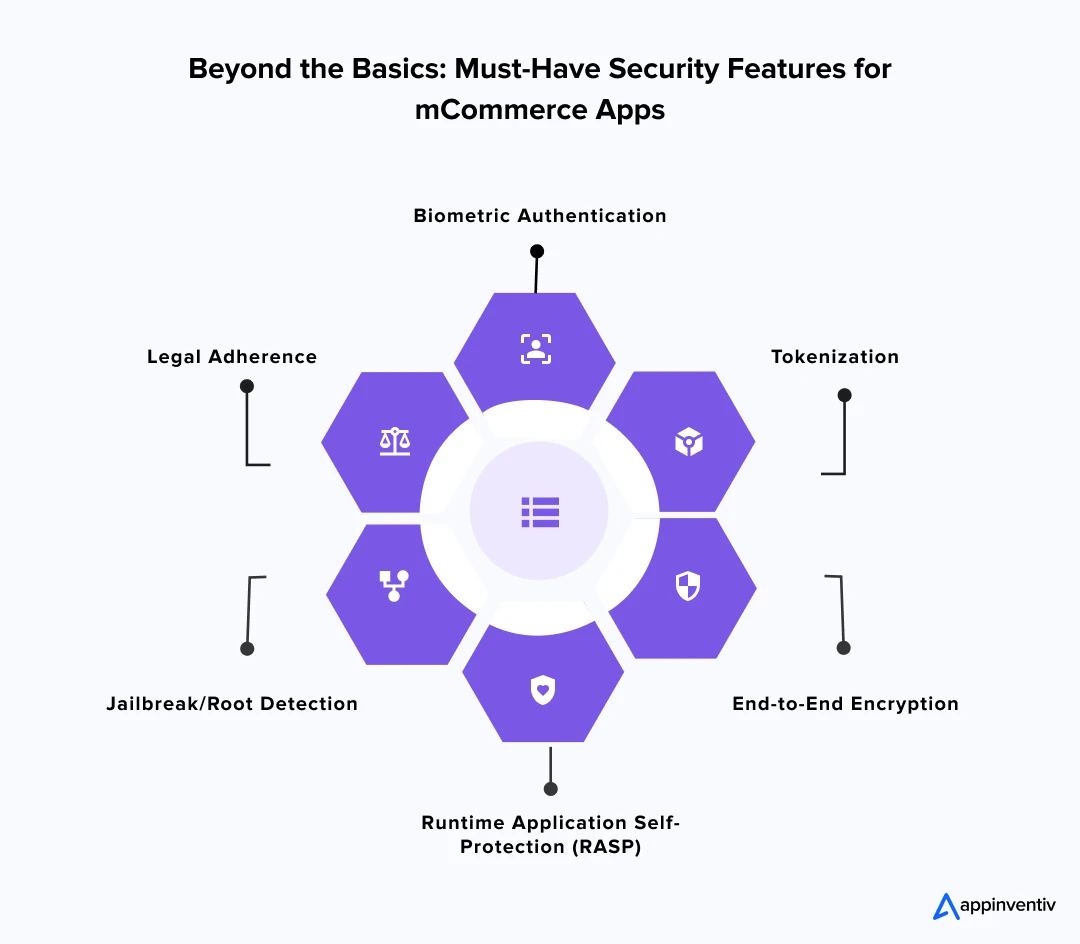
Biometric Authentication: Implementing fingerprint or facial recognition authentication delivers both enhanced user experience and superior security outcomes. Users appreciate the streamlined login process, while organizations benefit from authentication methods that are significantly more difficult to compromise than traditional password-based systems.
Tokenization: Substituting sensitive payment information with unique, non-sensitive tokens during transaction processing represents a fundamental security practice. This approach ensures that intercepted data remains useless to potential attackers, as the tokens cannot be reverse-engineered to reveal actual financial details.
End-to-End Encryption: Comprehensive encryption of all data transmitted between client devices and server infrastructure prevents interception and manipulation during transit. This encryption mechanism is particularly crucial for applications handling sensitive user information or financial transactions.
Runtime Application Self-Protection (RASP): Deploying real-time monitoring and protection capabilities enables immediate threat detection and response. These systems continuously analyze application behavior patterns and can automatically neutralize suspicious activities before they escalate into security incidents.
Jailbreak/Root Detection: Applications must include mechanisms to identify compromised devices where standard security controls have been bypassed. When jailbroken or rooted devices are detected, appropriate responses might include restricting functionality or preventing access to sensitive features entirely.
Legal Adherence: Adherence to data privacy laws cannot be compromised. Legal requirements such as GDPR for the European market and US export laws for cryptographic algorithms must be followed by your mobile commerce app development company.
Transformative Features for a High-Performing mCommerce App
One of the elements influencing the success of the mCommerce app is its features. You might want to include the following features in your mCommerce app if you want it to stand out from the competition.
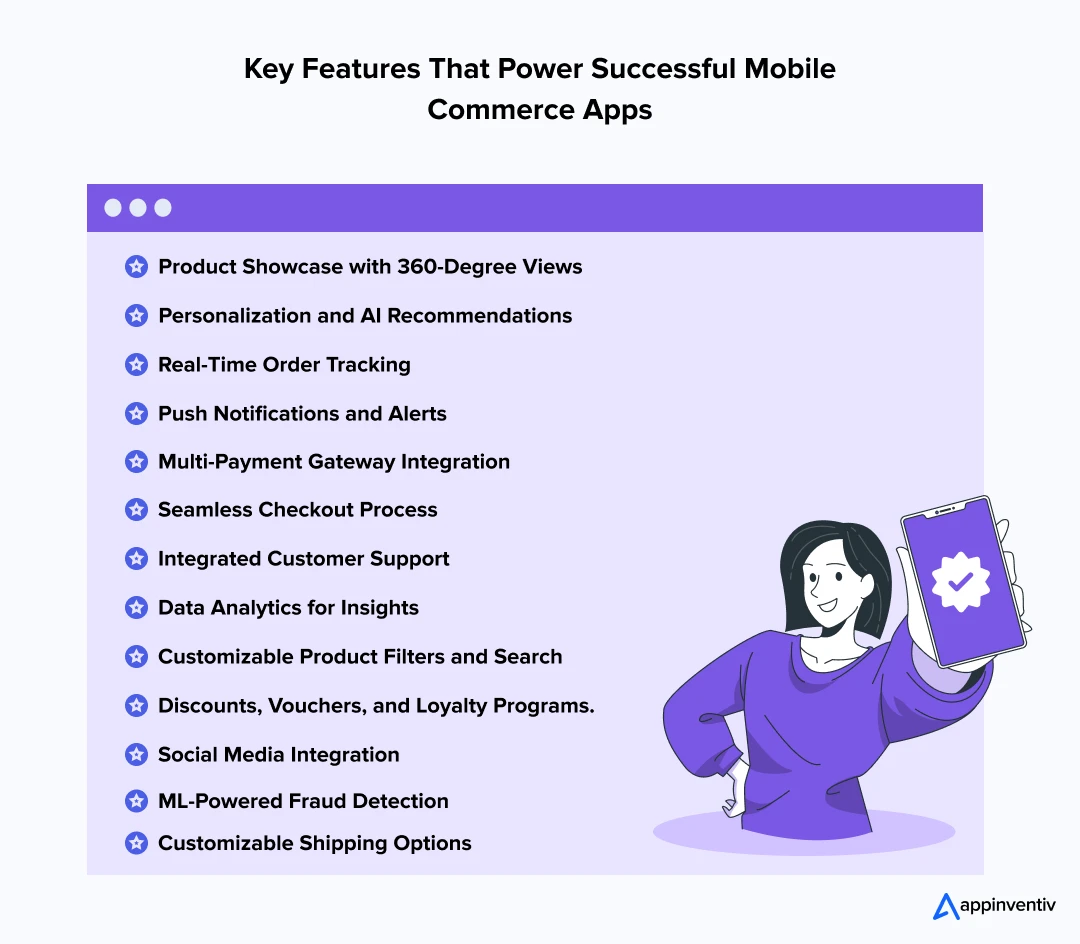
Product Showcase with 360-Degree Views: For an interactive experience that boosts engagement and conversion rates, display products with 360-degree views or augmented reality.
AI and Personalization Suggestions: Increase sales and customer retention by using AI to offer tailored product recommendations based on user preferences.
We at Appinventiv assisted Edamama in converting its simple eCommerce app into an AI-powered platform that offers a customized shopping experience and greatly enhances customer service.
Real-Time Order Tracking: Keep customers informed and involved by providing real-time order tracking through push notifications and updates.
Push Notifications and Alerts: To increase engagement and conversions, send out timely push notifications about sales, price reductions, or order updates.
Multi-Payment Gateway Integration: For a smooth, safe checkout process, incorporate international payment methods like PayPal and Apple Pay.
Smooth Checkout Process: To lower cart abandonment, streamline checkout with one-click payments, autofill forms, and guest checkout.
Integrated Customer Support: For prompt problem solving, offer round-the-clock customer support via voice calls, live chat, or AI chatbots.
Data Analytics for Insights: Gain insights by using data analytics to monitor user behavior, improve marketing tactics, and prepare the app for emerging trends.
Customizable Product Filters and Search: Provide sophisticated search filters to help users make better decisions and locate products more quickly.
Discounts, coupons, and loyalty schemes: To promote repeat business and boost sales, include sections for loyalty programs and discounts.
Social Media Integration: Increase engagement and brand visibility by enabling users to post their favorite purchases or products straight to social media platforms.
ML-Powered Fraud Detection: Make use of ML to identify fraudulent transactions, guaranteeing a safe and reliable online shopping experience.
Customized Shipping Options: Increase customer satisfaction and convenience by providing flexible shipping options like same-day delivery or in-store pickup.
Estimating the Mobile Commerce App Development Cost
Depending on factors like platform preference, features, and app complexity, the cost of mCommerce app development can vary significantly. Developing a mobile commerce app can cost anywhere from $40,000 to $500,000 or more on average. Everything from design and development to testing and deployment is covered in this estimate.
The cost may increase if you choose mobile commerce solutions with sophisticated features like real-time order tracking, AI-driven recommendations, payment integration, and strong security measures. Additionally, because iOS development has more demanding technical requirements than Android development, it usually costs more.
Partnering with a skilled and experienced mCommerce app development team can significantly impact the quality and success of your application. Beyond building a secure and high-performing solution, the right team will offer valuable guidance throughout the development lifecycle, helping you avoid delays, technical pitfalls, and costly revisions.
However, development costs can vary widely based on factors such as the team’s location, expertise, and project timeline. It’s also important to consider long-term expenses post-launch, including routine updates, security enhancements, and feature upgrades to ensure your app remains reliable, secure, and aligned with evolving user expectations.
Get expert-backed insights into the exact costs, development timelines, and must-have features—so you can plan smarter, launch faster, and scale with confidence.
Top Mobile Commerce Trends Shaping the Future of Shopping
By being aware of the latest mCommerce trends and by implementing those, businesses can stay ahead of the curve and maintain their competitive edge. Here are some of the top mobile commerce trends that are revolutionizing the way people shop.
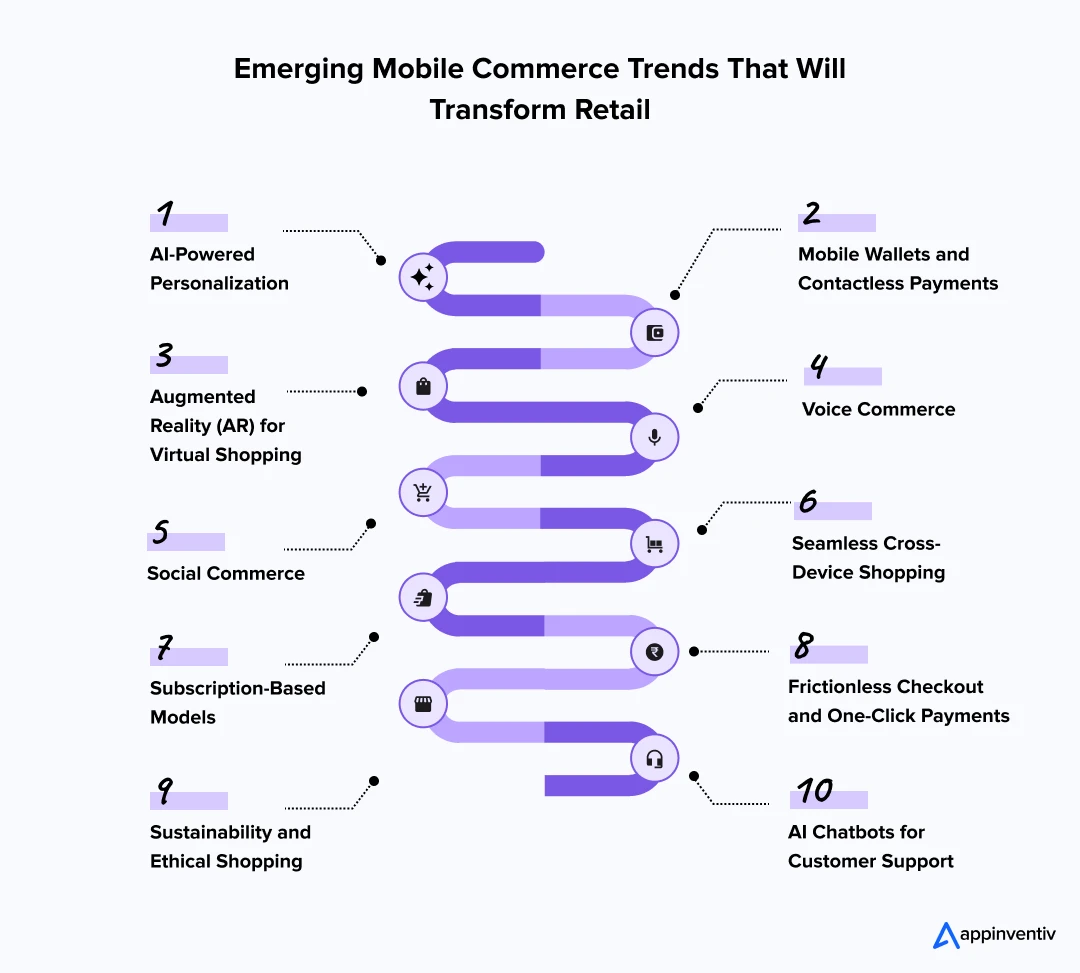
AI-Powered Personalization: By examining user behavior and preferences, AI is transforming the way companies create mCommerce apps. Highly customized shopping experiences that raise engagement and conversion rates are made possible by AI in eCommerce.
Mobile Wallets and Contactless Payments: As mobile wallets such as Google Pay and Apple Pay gain traction, mCommerce app development revolves around incorporating safe, quick, and easy payment methods to improve user experience and expedite the checkout process.
Augmented Reality (AR) for Virtual Shopping: AR technology is revolutionizing the way people shop by allowing them to virtually try on items or see them in their own surroundings. Businesses are using this trend to create mCommerce apps that offer a dynamic and engaging shopping experience.
Voice Commerce: As smart assistants like Alexa and Siri allow users to make purchases with voice commands, voice commerce is expanding. As voice technology advances, incorporating this feature into mCommerce app development will provide users with a more convenient hands-free shopping experience.
Social Commerce: Social media sites like Facebook and Instagram are turning into vital platforms for sales. Businesses are now able to sell goods directly to customers by incorporating shopping features into these platforms. In order to increase sales and engagement, this change is pushing brands to create mCommerce apps with social commerce features.
Seamless Cross-Device Shopping: Customers anticipate a smooth cross-device shopping experience. mCommerce app development must guarantee that users have a consistent and seamless experience across all platforms, regardless of whether they begin their shopping on a mobile app and complete it on a desktop or vice versa.
Subscription-Based Models: A growing number of people are utilizing subscription services for a wide range of products. Companies are utilizing mobile commerce solutions to develop applications that simplify the management of subscriptions for consumers, generating recurring revenue for brands.
Frictionless Checkout and One-Click Payments: Modern mCommerce app development places a strong emphasis on simplifying the checkout process to create a smoother user experience and minimize cart abandonment. By integrating features like one-click payments and mobile wallets, businesses make it easier for customers to complete their purchases in just a few seconds.
Sustainability and Ethical Shopping: Customers are choosing eco-friendly and ethically sourced products as they become more aware of their purchasing choices. Businesses are showcasing their green initiatives through their mobile commerce solutions, and apps are adding features that make it simple for users to shop for sustainable products.
AI Chatbots for Customer Support: By instantly answering user questions, AI-powered chatbots are enhancing customer service. In mCommerce app development, these bots manage everything from processing returns to responding to product inquiries, improving the overall shopping experience, and streamlining customer service.
Initiate Your Mobile Commerce App Development Journey with Appinventiv
With growth projections indicating a significant increase in both app development and revenue streams, the future of mCommerce apps is unquestionably bright. Mobile commerce development is poised to transform how companies engage with customers as the industry speeds up its transformation with various innovations like chatbots driven by AI, AR-based product visualization, one-click payments, and personalized shopping experiences powered by machine learning.
If you’re a business leader or stakeholder planning to enter the mCommerce space, now is the perfect time. With retailers rapidly embracing these technologies, waiting any longer could mean falling behind the competition.
Appinventiv, being a renowned eCommerce app development company, has assisted successful startups like Edamama and 6th Street as well as retail industry giants like Adidas and IKEA, in streamlining their user engagement processes and ensuring continued RoI.
With our deep expertise in mCommerce app development, we transform your vision into a high-performing mobile application that captivates users, enhances the overall experience, and drives measurable conversions. Appinventiv is your reliable partner in mobile commerce app development, helping you from idea to implementation, whether you’re an established enterprise or a budding startup.
Take the first step toward transforming your company by sharing your mCommerce app idea with us right now.
FAQs
Q. What is the role of mCommerce in business?
A. While mCommerce applications have several characteristics when it comes to showing their prominence in the sector, the two main areas where their role comes to the forefront are the promotion of small and medium-sized businesses and the greater scope of earning revenue by taking the product to the world.
Q. What are some of the top mCommerce trends?
A. Some of the top mCommerce trends that promise to shape the future of mobile commerce include:
- Augmented reality
- Chatbots
- Voice search and control
- Omni channel
- Speed optimization
- Mobile in-store check-out
- Social commerce
Q. What are some of the top challenges in developing highly secure mCommerce apps?
A. Creating a truly secure mobile commerce application presents developers with numerous obstacles that require careful consideration and strategic planning.
- Data Protection: This remains one of the most pressing concerns, as developers must implement robust encryption protocols while ensuring customer information stays protected during storage and transmission. Any weakness in data handling can expose users to significant privacy risks.
- Fraud Prevention: The threat of fraud is always evolving, and keeping up requires constant attention. From payment scams to stolen identities and account takeovers, the risks are real. Multi-factor authentication is a powerful tool to fight back but it needs to be implemented in a way that doesn’t frustrate users or slow them down.
- Regulatory Compliance: Laws and data protection standards are constantly evolving. Whether it’s GDPR in Europe, CCPA in California, or PCI-DSS for handling payments, staying compliant isn’t optional. Falling short can mean not just hefty fines, but also a major hit to your reputation.
- Payment Security: When it comes to transactions, users want speed, but not at the cost of safety. That’s why it’s critical to integrate reliable payment gateways and tokenization systems that secure sensitive data without adding friction. A well-designed checkout experience should feel effortless and secured.
Q. What is the cost of mCommerce app development?
A. The mCommerce app development costs vary dramatically based on your specific requirements and chosen approach. Platform selection significantly impacts pricing—native iOS and Android development costs more than cross-platform solutions, though each approach offers distinct advantages.
Basic mCommerce applications typically start around $40,000, while complex enterprise solutions can exceed $500,000 depending on feature requirements and customization needs. Advanced functionality like artificial intelligence integration, real-time order tracking, sophisticated payment processing, and enterprise-grade security measures will substantially increase your investment.
Again, design complexities, third-party integrations, and ongoing maintenance requirements also influence total project costs. To know more about the cost to build an mCommerce app, connect with our experts today!
Also Read: How Much Does it Cost to Build an eCommerce App?
Q. What is the future of mCommerce app development?
A. The future of mCommerce app development looks promising with ongoing advancements in AI, AR, and mobile payment solutions. Mobile commerce continues to evolve, with AI delivering smarter product recommendations and AR enabling customers to visualize purchases before making a purchase. Also, voice-based shopping is growing as people get comfortable with smart speakers.
Payment methods are becoming increasingly seamless with the rise of mobile wallets, contactless options, and biometric authentication, which are replacing traditional passwords. At the same time, security remains a top priority, particularly as cyber threats continue to evolve in complexity. However, when robust security measures are in place, businesses can confidently offer a smooth, user-friendly checkout experience, building trust with customers, reducing friction, and ultimately boosting conversion rates.
Q. How can the security of an mCommerce app be maintained?
A. Security requires constant attention, not just initial setup. Use strong encryption for all data, implement multi-factor authentication without annoying users, and keep payment gateways secure. Stay compliant with GDPR and PCI-DSS requirements while running fraud detection systems that catch suspicious activity. Regular security audits and prompt updates help you stay ahead of new threats.


- In just 2 mins you will get a response
- Your idea is 100% protected by our Non Disclosure Agreement.
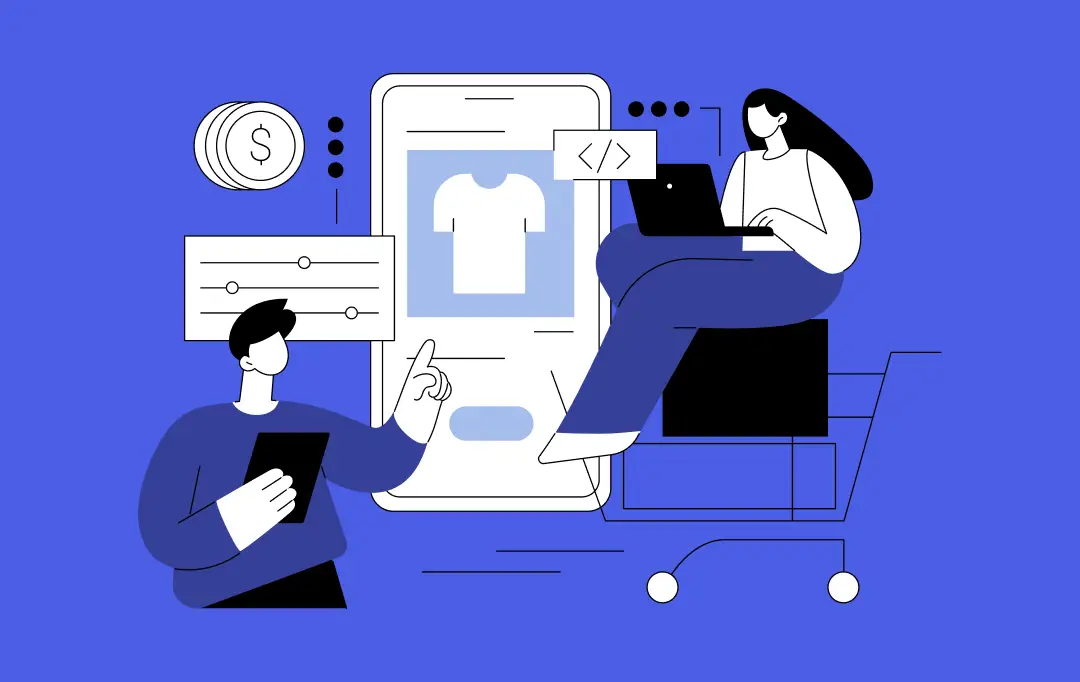
How Much Does It Cost to Develop an eCommerce Platform like The Iconic in Australia?
Key takeaways: Building an eCommerce platform like The Iconic in Australia can cost anywhere from AUD $46,500 to AUD $775,000+ depending on scale and sophistication. The real eCommerce cost drivers are backend architecture, integrations, compliance, and system reliability, not just design screens. Platforms like The Iconic succeed because they combine shopping experience, logistics, and payments…

Key takeaways: Global eCommerce fraud losses are expected to exceed $107 billion by 2029. Digital growth, Buy Now Pay Later features, and rising automation are all opening up new avenues for fraudsters to exploit. First-party abuse and refund abuse have ended up being the greatest source of pain globally, affecting nearly half of all online…

Top 20+ Profitable Ecommerce Business Ideas In Australia in 2026
Key takeaways: Australia’s eCommerce surge isn’t just about numbers, it’s about mindset. Consumers expect personalization, speed, and sustainability as standard, not extras. The best business ideas address a genuine problem. From pet care to sustainable fashion, the niches winning in 2026 will be the ones that understand specific customer pain points. Technology is the quiet…








